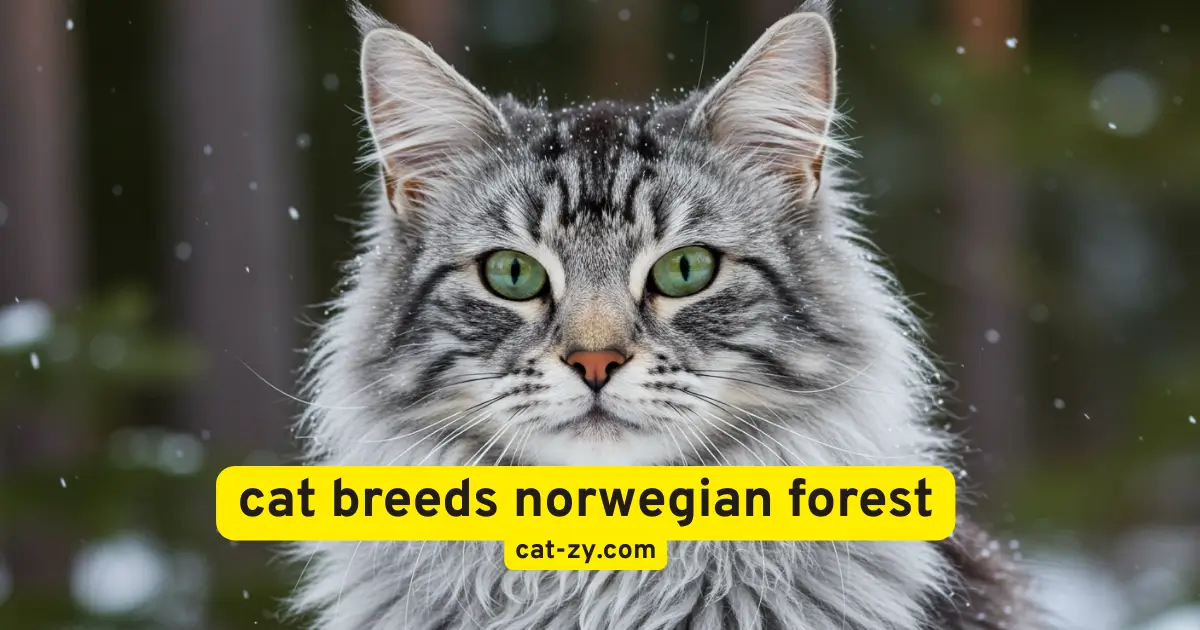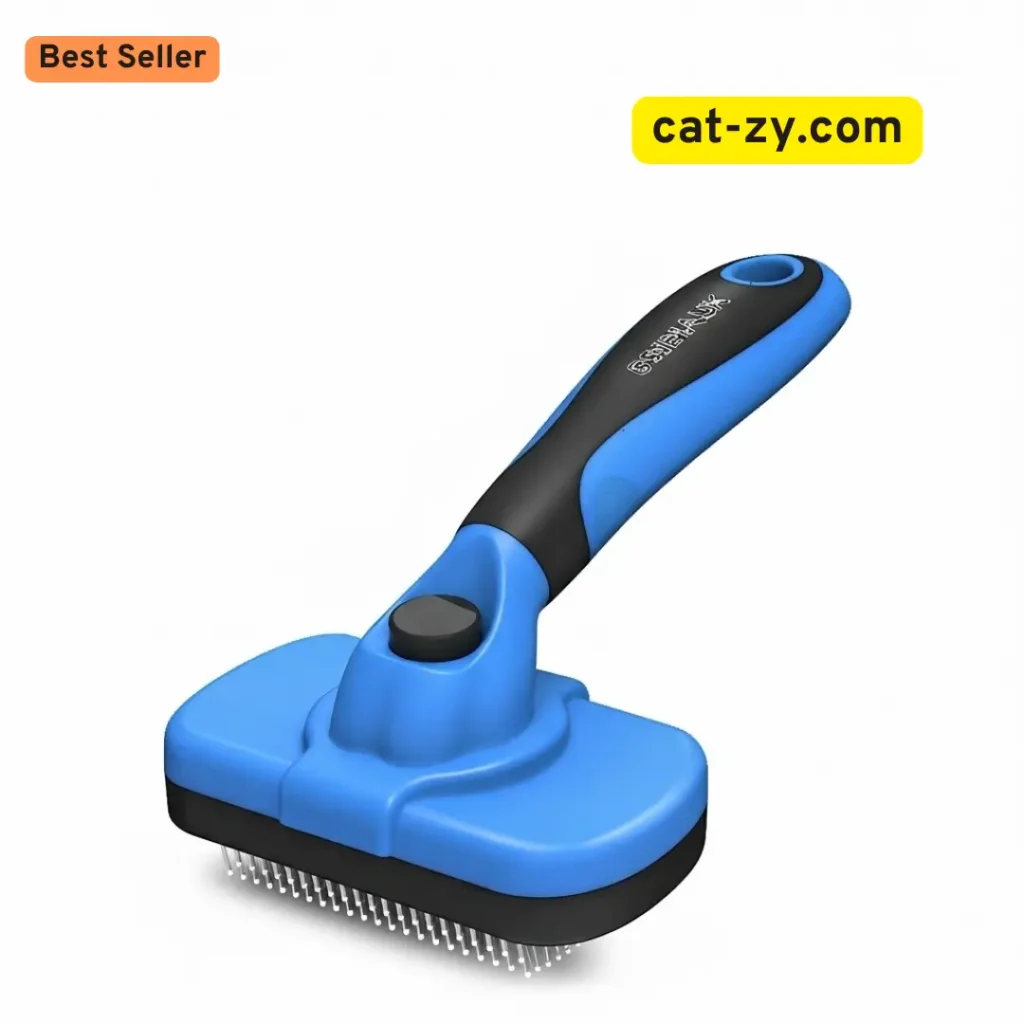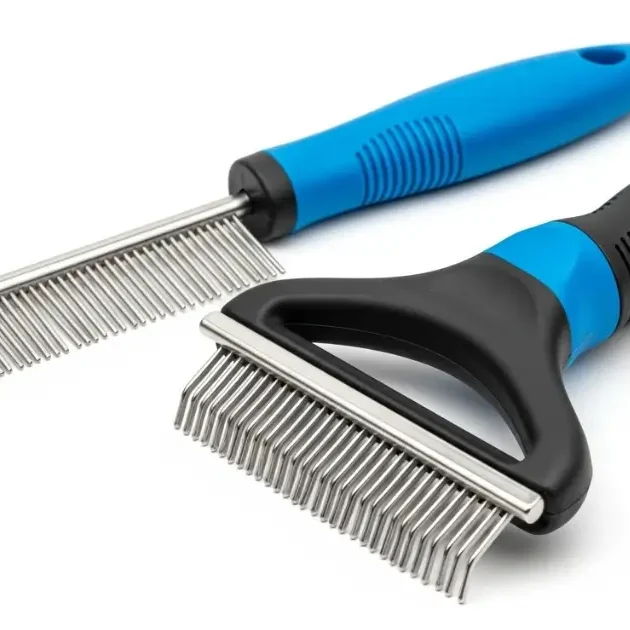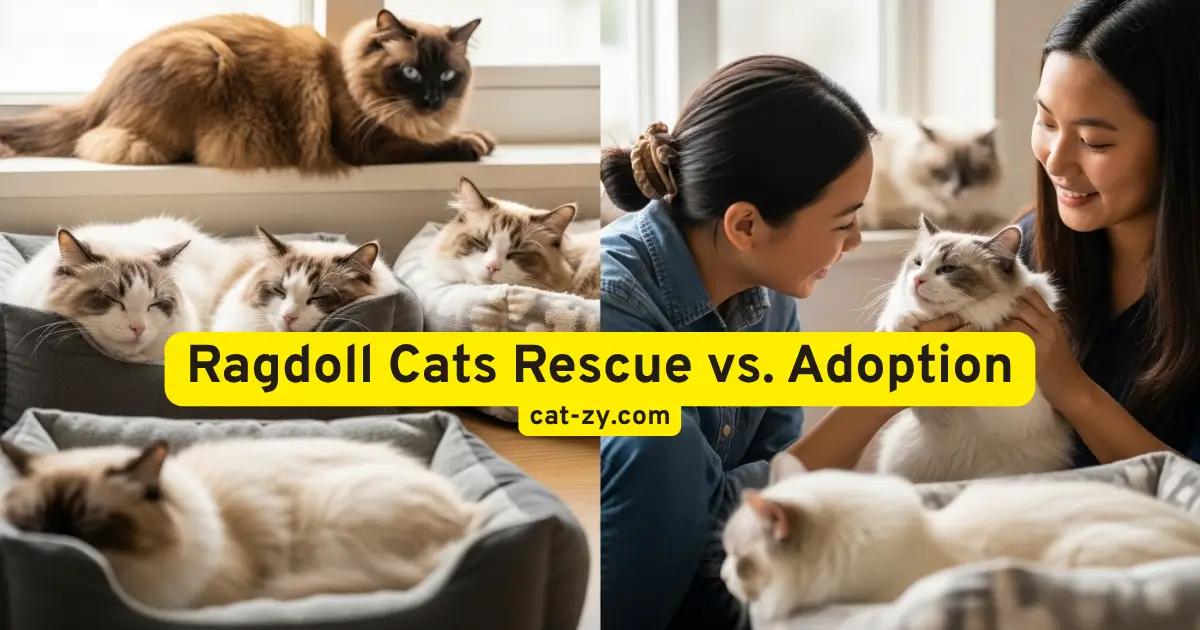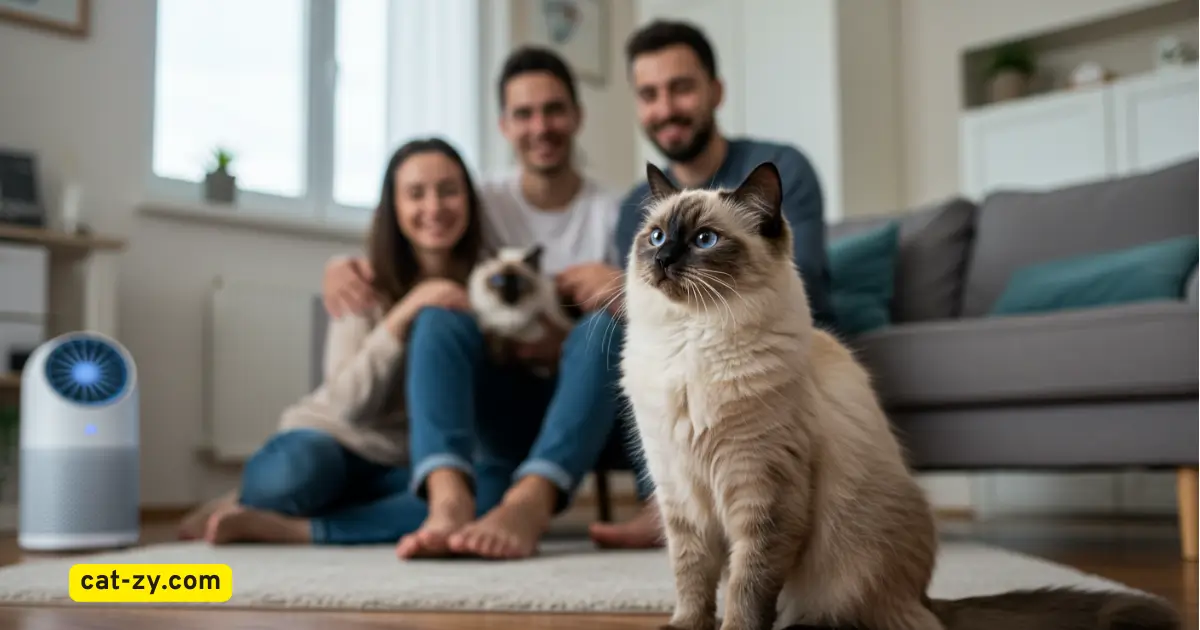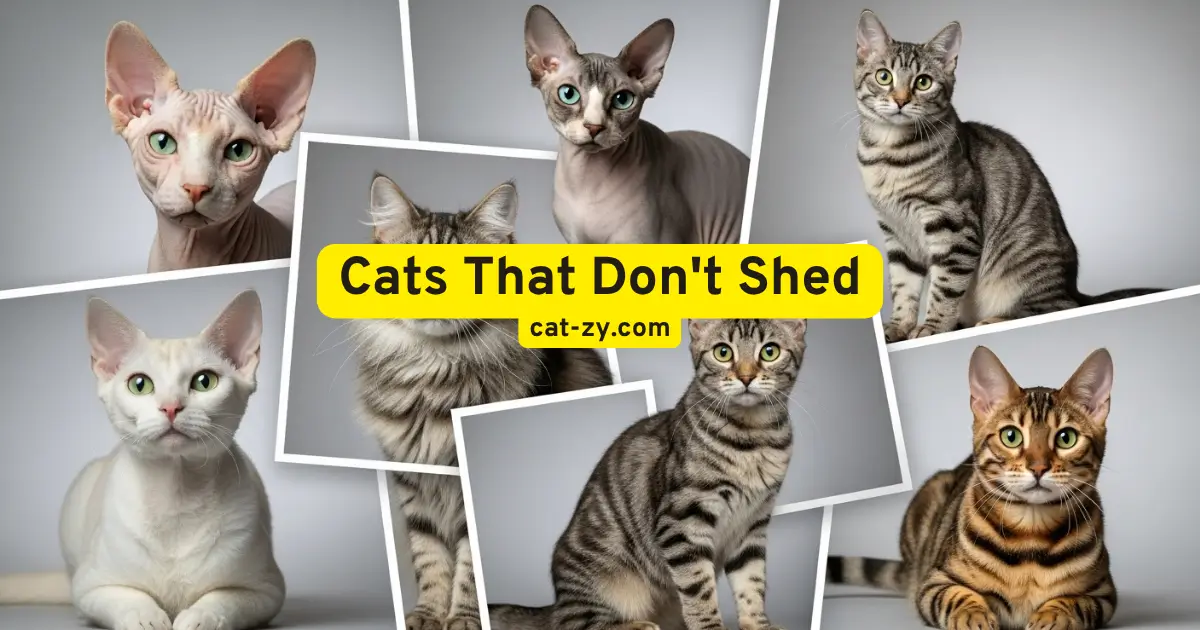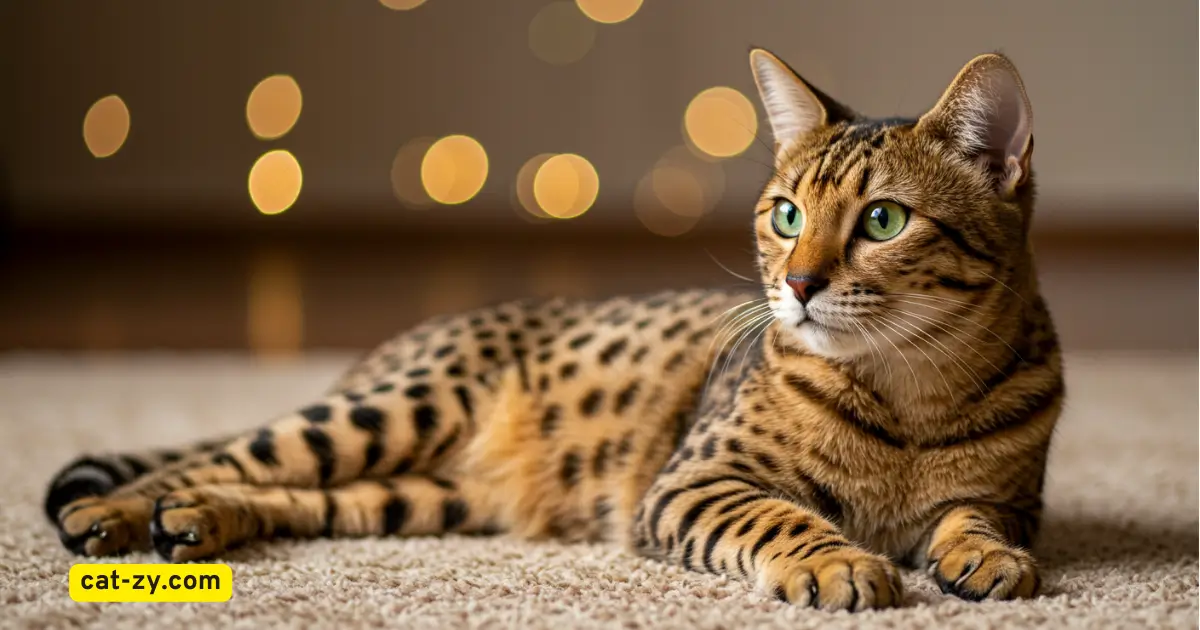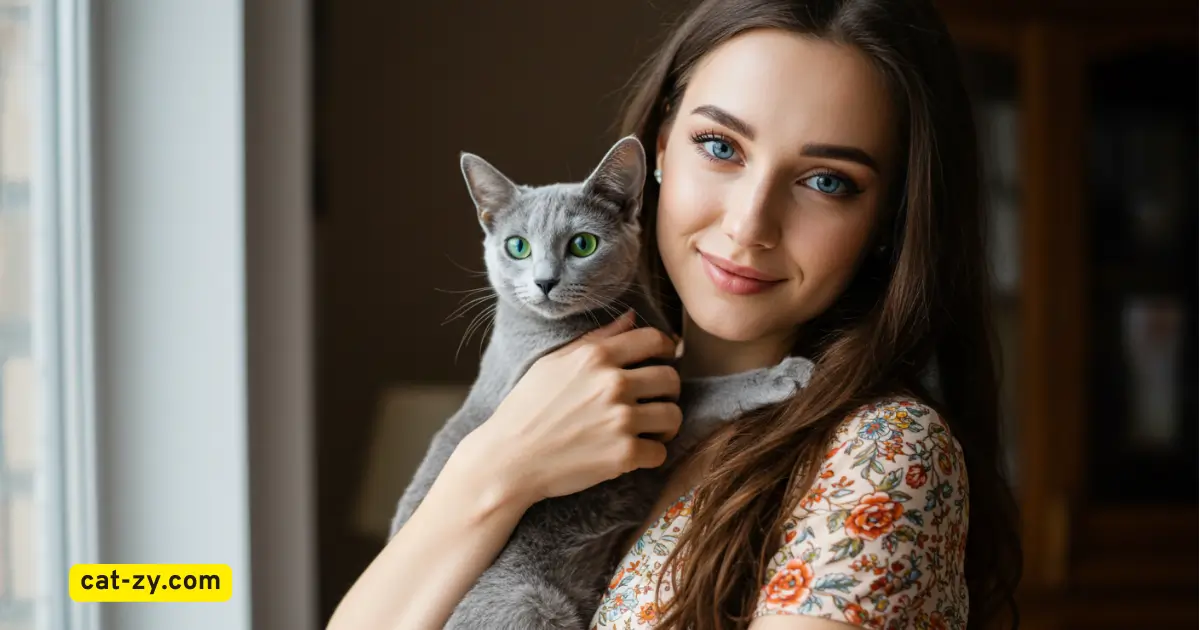Cat Breeds Norwegian Forest: 7 Fascinating Things to Know
Are you fascinated by majestic felines with a rich history? The Norwegian Forest cat is one such breed that has captured the hearts of many. It comes from Scandinavia and has adapted to cold climates.
What makes “cat breeds Norwegian Forest” unique among feline companions? Its stunning appearance and intelligent nature make it a great companion for families.
Exploring the Norwegian Forest cat reveals fascinating traits. Its robust build and playful demeanor are just a few things to learn about it.
Table of Contents
The Majestic Norwegian Forest Cat: An Overview
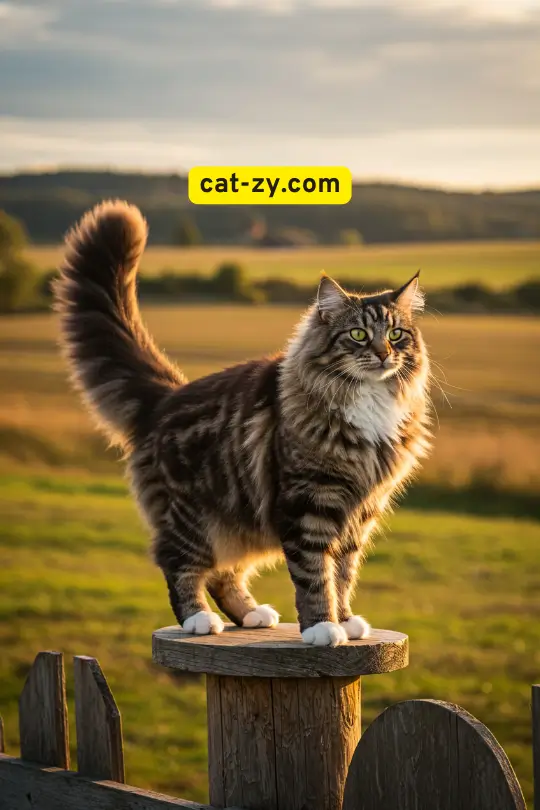
The Norwegian Forest cat comes from Scandinavian folklore. It’s known for its stunning looks and strong build. Learning about this breed, you’ll see its role in Norwegian culture and its rise as a favorite pet.
Ancient Origins in Scandinavia
The Norwegian Forest cat’s history goes back to Viking times. They were prized for their hunting skills and toughness. “cat breeds Norwegian Forest” developed thick fur and strong bodies that helped them thrive in harsh climates.
They played a big role in Norwegian folklore. They were linked to the goddess Freyja, known for love and fertility.
Their role in Norse mythology shows their value in Scandinavian culture. They were seen as strong, agile, and skilled hunters.
Recognition as an Official Breed
Getting the Norwegian Forest cat recognized took time. In the 1930s, efforts started to make it a unique breed. It wasn’t until the 1970s that the Norwegian Forest Cat Breeders Association was formed.
By the late 20th century, major cat registries like TICA and CFA recognized it. This recognition made “cat breeds Norwegian Forest” popular worldwide among feline enthusiasts. Today, it’s loved for its smarts, playful spirit, and beautiful looks.
The Rich History of Forest Cats of Norway
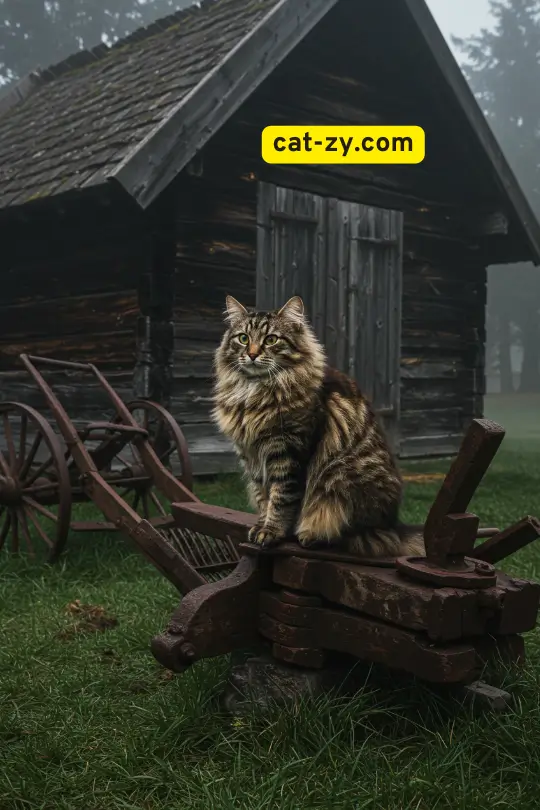
Exploring the Norwegian Forest Cat’s history, you find a mix of Norse mythology and practical use. This breed’s past is deeply connected to Scandinavian culture.
Norse Mythology Connections
The Norwegian Forest Cat’s history is filled with ties to Norse mythology. Cats were valued for their beauty and usefulness.
The Cats of Goddess Freya
In Norse mythology, Freya was often shown with cats. These cats were sacred. Some believe “cat breeds Norwegian Forest” are linked to Freya, thanks to their beauty and gentle nature.
Legends and Folklore
Scandinavian legends often feature cats as the gods’ companions and home guardians. The Norwegian Forest Cat’s role in these stories shows their cultural significance.
From Working Cats to Beloved Companions
Originally, Norwegian Forest Cats were valued for their hunting skills on farms and ships. They controlled rodent populations.
Role in Norwegian Farms and Ships
On Norwegian farms and ships, “cat breeds Norwegian Forest” were essential working animals. They protected food and crops from rodents. Their toughness and adaptability suited the harsh Scandinavian climate.
Near Extinction and Revival
By the mid-20th century, the breed was close to extinction due to cross-breeding. But dedicated breeding efforts saved it. Today, it’s a popular and beloved breed.
The Norwegian Forest Cat’s transformation from a working animal to a cherished pet shows how attitudes towards pets have changed. It highlights the unique qualities of these cats.
Distinctive Physical Characteristics of the Norwegian Forest Cat
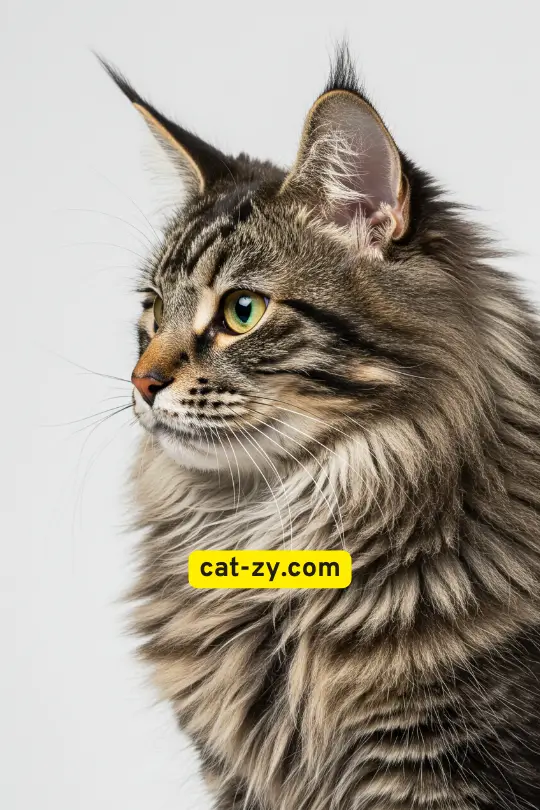
The Norwegian Forest Cat is known for its stunning looks. It has a strong body and a thick coat. These traits are not just for show; they also help the cat survive.
Impressive Size and Muscular Build
The Norwegian Forest Cat is big and strong. “cat breeds Norwegian Forest” Males weigh 13-20 pounds, while females weigh 9-13 pounds. Their sturdy build and muscles make them look powerful.
They were bred to hunt and survive in tough Norwegian environments. Their size and strength helped them do this.
Double-Layered Weather-Resistant Coat
The Norwegian Forest Cat has a special coat. It has a water-resistant outer layer and a soft undercoat. This keeps them warm and dry in cold, wet weather.
Seasonal Shedding Patterns
The Norwegian Forest Cat sheds twice a year. “Cat breeds Norwegian Forest” sheds significantly in the spring and fall seasons. Grooming is key during these times to avoid tangles.
Coat Texture and Function
The coat is not just pretty; it’s also practical. The outer layer is shiny, and the undercoat is soft. This combo keeps them warm and protected.
Unique Facial Features and Ear Tufts
The Norwegian Forest Cat has a broad face and a short nose. Their ears have fur tufts. This makes them look strong and alert.
Their face and ears make them stand out. Cat lovers adore their unique look.
Temperament and Personality Traits
The Norwegian Forest Cat is not just beautiful; it has a rich personality, too. This breed is smart, social, and adaptable. It makes a great pet for many families.
Intelligence and Problem-Solving Abilities

The Norwegian Forest Cat is very intelligent. They solve problems easily. You might see “cat breeds Norwegian Forest“, opening doors or playing with puzzle toys in creative ways.
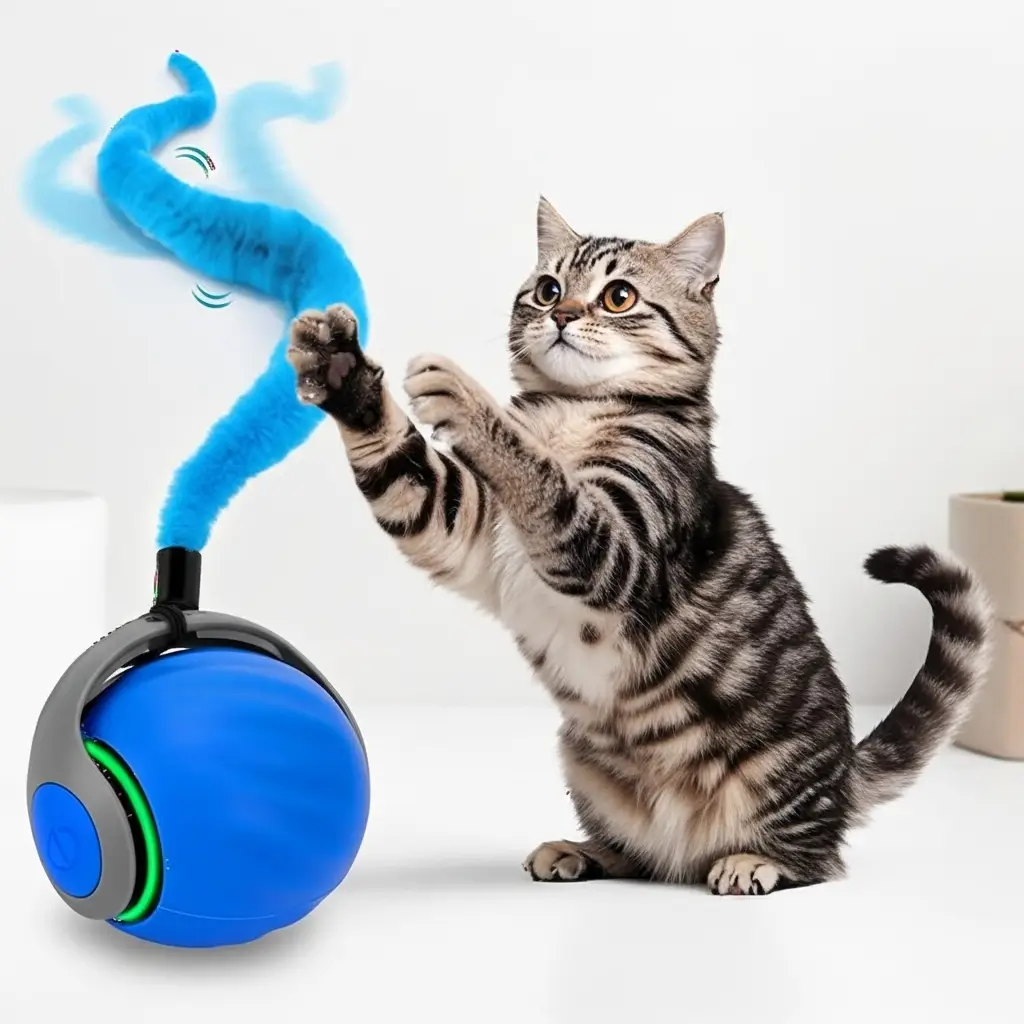
Because they are smart, they need things to do. Give them interactive toys and fun activities to keep them happy.
Social Nature with Family Members
This breed loves people and forms strong bonds with them. They are often called “dog-like” because they love to join in on family fun. Your Norwegian Forest Cat will follow you everywhere and love to play.
Interaction with Other Pets
The Norwegian Forest Cat usually gets along with other pets. They are not mean and can live with other cats and dogs. But they need to be introduced slowly and carefully.
Health Considerations and Lifespan
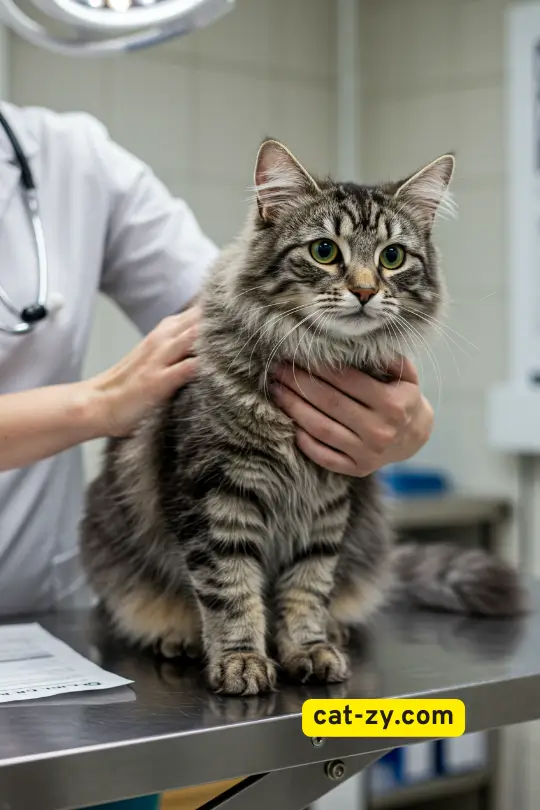
The Norwegian Forest Cat is known for its strong health. But, like all breeds, it can face certain health issues. Knowing these health concerns is key to caring for your pet.
Common Genetic Health Issues
Norwegian Forest Cats may face specific genetic health problems. Being aware of these can help prevent them.
Glycogen Storage Disease IV
Glycogen Storage Disease IV is a rare genetic disorder. It affects how the cat’s body uses glycogen, leading to serious health issues. Early diagnosis is vital for managing this condition.
Hypertrophic Cardiomyopathy
Hypertrophic Cardiomyopathy is a heart condition. It can cause heart failure if not managed. Regular vet visits can help catch this early.
Preventative Care Recommendations
Preventive care is essential for your Norwegian Forest Cat’s health. This includes regular vaccinations, a balanced diet, and regular grooming to prevent coat matting. Also, regular vet visits are key for early detection of health issues.
Expected Lifespan and Aging Process
Norwegian Forest Cats typically live between 12 to 16 years. Factors like diet, lifestyle, and genetics play a role. As your cat ages, adjust their care to keep them healthy and comfortable.
Cat Breeds Norwegian Forest: Care Requirements and Maintenance
To keep your Norwegian Forest cat healthy and happy, it’s key to know its care needs. This majestic breed needs a full care plan. This includes regular grooming, a balanced diet, and enough exercise.
Grooming Needs for Their Luxurious Coat
The Norwegian Forest cat’s coat is stunning, with a thick, water-resistant double layer. Brushing your cat 2-3 times a week helps prevent matting and tangling, mainly during shedding season.
Seasonal Grooming Differences
In spring and fall, Norwegian Forest cats shed more, needing more grooming. Daily brushing during these times helps manage shedding and reduces hairballs.
Tools and Techniques
The right grooming tools, like a slicker brush or a wide-tooth comb, are important. Gentle, patient grooming helps your cat get used to it.
Dietary Requirements and Nutrition
A balanced diet is vital for your Norwegian Forest cat’s health. High-quality cat food rich in protein and moderate in fat is best. Avoid overfeeding to prevent obesity.
Exercise and Environmental Enrichment
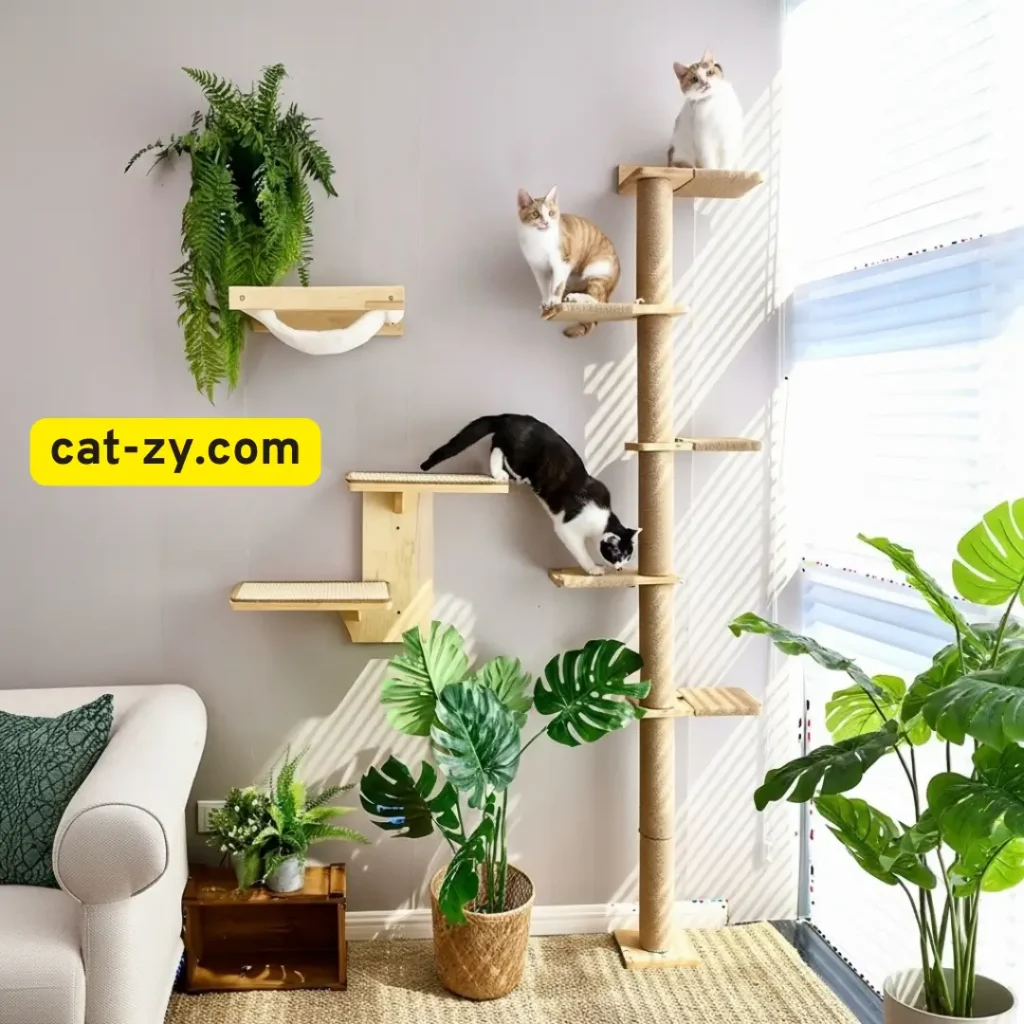
Norwegian Forest cats are naturally active and curious. They need regular exercise and mental stimulation. Engage your cat in play with toys, climbing structures, or interactive games.
By understanding and meeting your Norwegian Forest cat’s care needs, you can ensure a long, healthy, and happy life for your pet.
Color Variations Including the Black Norwegian Forest Cat
The Norwegian Forest cat breed is known for its wide range of colors and patterns. These cats come in many different colors and patterns, making each one special.
Standard Color Patterns and Combinations
The breed standard includes many colors and patterns. Common colors are brown, blue, and red, often in tabby or solid patterns. They can also have white markings or be all white. Their double coat shows off a variety of colors, from soft pastels to bright, bold ones.
The Striking Black Norwegian Forest Cat
The black Norwegian Forest cat is known for its shiny black coat. This color is striking because of the contrast with their bright eyes. The black coat comes from a genetic variation that affects melanin production.
Rare and Unique Colorations
Some Norwegian Forest cats have rare colors like silver or smoke patterns. These colors come from specific genetics and make the cat even more beautiful. Whether you like common or rare colors, the Norwegian Forest cat’s coat is sure to impress.
How Much is a Norwegian Forest Cat? Cost and Ownership Considerations
Buying a Norwegian Forest Cat is more than just the first payment. It’s important to know all costs to give your pet the best life.
Initial Purchase Price Ranges
The price of a Norwegian Forest Cat varies a lot. You might pay $600 to $1,200 for a pet-quality kitten. Show-quality kittens can cost $1,500 to $3,000 or more.
Factors Affecting Price
Several things affect a Norwegian Forest Cat’s price. These include breeder reputation, bloodline, and geographical location. Kittens from champion-line parents or rare colors are pricier.
Regional Price Differences
Prices change by region. This is due to demand, cost of living, and local rules. For example, prices might differ between the East and West Coast and the Midwest.
Ongoing Maintenance Costs
There are ongoing costs after buying a cat. These include food, veterinary care, and grooming. Their thick coat needs regular grooming, adding to costs.
Annual vet visits, including shots and check-ups, cost $200 to $500. Good cat food can be $500 to $700 a year, based on brand and needs.
Adoption vs. Breeder Options
You can choose to adopt or buy from a breeder. Adoption fees are $50 to $200 and include initial shots and spaying/neutering.
Buying from a breeder gives you more info on the cat’s background and health. But it costs more upfront.
Conclusion: Is the Norwegian Cat Right for You?
After learning about the Norwegian Forest cat, you might wonder if it’s right for you. This breed has a rich history, unique looks, and a charming personality. It’s no surprise that many cat lovers are interested in them.
Thinking about getting a Norwegian Forest cat? You need to think about whether you can give them the care they need. They require regular grooming to keep their coat looking great. They also need a fun environment to stay active and happy.
The Norwegian Forest cat is very loyal and loving. They make great pets for families or anyone who can spend time with them. If you want a beautiful and charming cat, the Norwegian Forest might be perfect for you.
FAQ
What is the average lifespan of a Norwegian Forest cat?
Norwegian Forest cats live between 12 to 16 years. This depends on their diet, lifestyle, and health.
Are Norwegian Forest cats good with children?
Yes, they are. Norwegian Forest cats are gentle and patient. They’re great with kids and other pets if they’re socialized right.
How much grooming does a Norwegian Forest cat require?
They need regular grooming because of their thick coat. Brush them at least twice a week. Daily brushing is best during shedding season.
What are the common health issues in Norwegian Forest cats?
They can get Glycogen Storage Disease IV and Hypertrophic Cardiomyopathy. Regular vet visits and genetic tests can catch these early.
How much does a Norwegian Forest cat cost?
Prices vary based on location, breeder, and bloodline. Pet-quality cats cost between $600 to $1,200. Show-quality ones can be over $2,000.
Can I adopt a Norwegian Forest cat?
Yes, you can adopt one from a rescue or shelter. While purebreds might be rare, you can find mixed-breed cats with Norwegian Forest traits.
Are black Norwegian Forest cats rare?
Black is a recognized color for Norwegian Forest cats. It’s not as common as some colors, but not rare either. You can find black ones through good breeders.
Do Norwegian Forest cats require a lot of exercise?
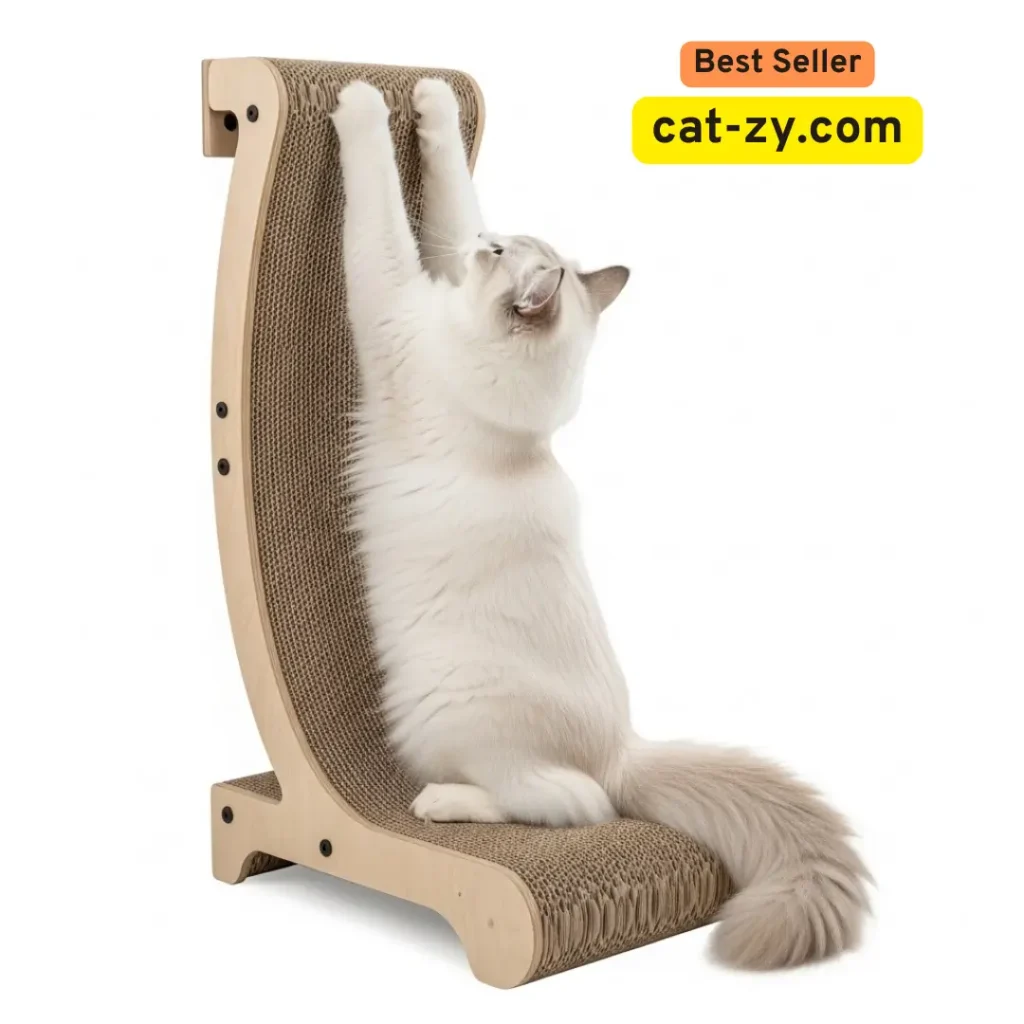
Yes, they do. They need regular exercise to stay healthy and happy. Give them toys, scratching posts, and climbing structures to keep them active.
Are there different types of Norwegian Forest cats?
No, there is only one official cat breed Norwegian Forest type, recognized by major cat registries. However, they come in numerous color variations and patterns, including tabby, solid, bicolor, and tortoiseshell. While all Norwegian Forest cats share the same breed characteristics, such as their double coat and large size, individual cats may vary slightly in appearance based on their specific bloodlines and genetics.
Are Norwegian Forest cats good pets?
Yes, cat breeds Norwegian Forest makes excellent pets for the right household. They are affectionate, loyal, and form strong bonds with their families. These intelligent cats adapt well to indoor living and get along wonderfully with children and other pets. However, they do require regular grooming due to their thick coat and need mental stimulation through play and interactive activities to stay happy.
How do I tell if my cat is a Norwegian Forest cat?
To identify cat breeds Norwegian Forest, look for distinctive features including a large, muscular body weighing 13-20 pounds for males, a thick double-layered water-resistant coat, and triangular-shaped ears with distinctive lynx-like tufts. They have almond-shaped eyes, a straight profile, and long bushy tails. Their hind legs are slightly longer than their front legs, giving them a unique stance. A DNA test can confirm the breed definitively.
What is the rarest Norwegian Forest cat?
Among cat breeds Norwegian Forest, the rarest colorations include amber and true cinnamon patterns, which result from specific rare genetic combinations. Solid white Norwegian Forest cats with blue eyes are also quite uncommon. While black, silver, and smoke patterns are less common than traditional brown tabby, they’re not considered extremely rare. The rarest combinations involve specific color genetics paired with the breed’s distinctive physical characteristics.

